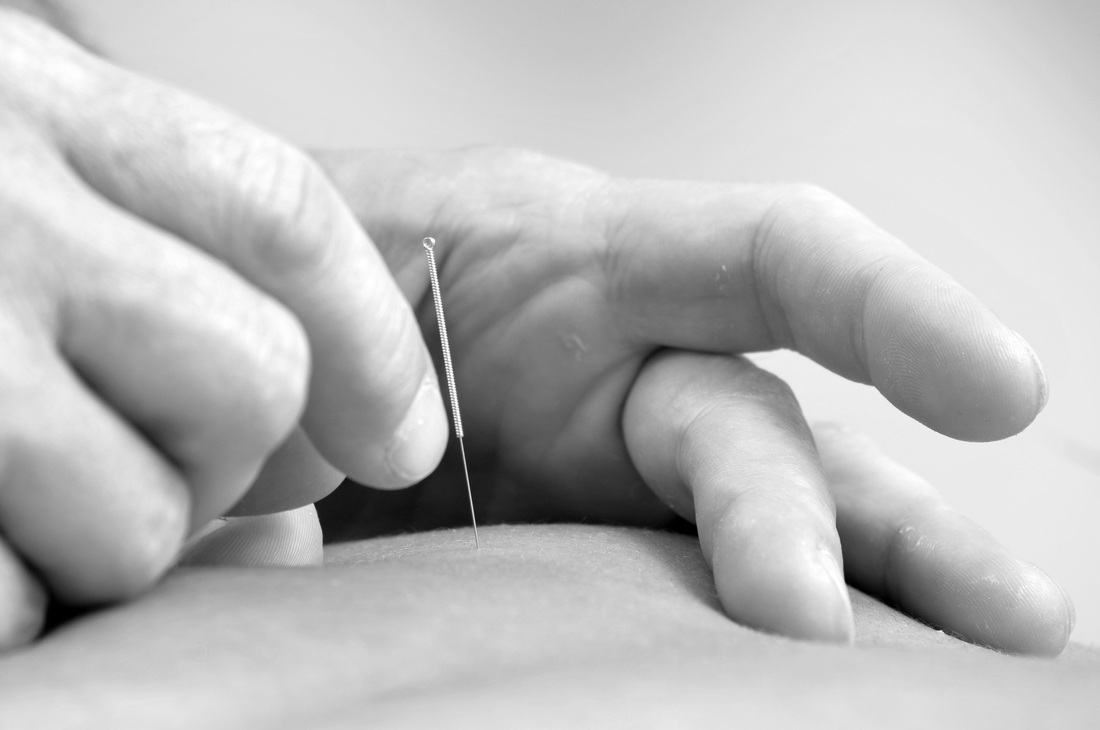At Borough Green Osteopaths we offer modern acupuncture, which is also known as dry needling. Dry needling is a modern treatment designed to ease muscular pain. It is slightly different to traditional acupuncture as it is based on the modern understanding of anatomy, physiology, and pathology instead of the interpretation of ‘meridians’ and ‘points’.
What is dry needling/modern acupuncture?
During dry needling, your practitioner inserts several filiform needles into your skin in the appropriate treatment area. Practitioners place the needles in ‘trigger points’ in your muscle or tissue, which creates intramuscular stimulation. The points that we usually focus on are areas of knotted or hard muscle.
What does dry needling help with?
Dry needling helps release the knot and relieve any muscle pain or spasms. The needles will remain in your skin for a short period of time. Depending on the condition and treatment, needles are in for anywhere from 5 to 20 minutes. For longer treatments, you can lie back and relax. Acupuncture can treat all sorts of different conditions, and can assist with the management of many symptoms. These aren’t limited to but include:
Is acupuncture safe?
The needles used for modern acupuncture treatment arrive in a sterile sealed pack, and once used they are disposed of and not used again. Acupuncture needles are fine, short, stainless steel needles: all needles are single use, and no fluid can be injected through these needles. Practitioners are fully trained and are insured to apply acupuncture needles and techniques.
Is it painful?
The needles used are comparable to the width of a human hair. Feeling the insertion of the needle can vary from going completely unnoticed, to feeling a small pinch of the skin: it does not feel like an injection or having blood taken. After needle insertion, some patients experience sensations such as warmth, heaviness, mild pain and tingling in the treatment area. This is normal and if you have any concerns regarding treatment, please ask your practitioner - they are more than happy to address any queries.
How many treatments will I need?
Different symptoms will require different amounts of treatment, and is unique to your case. Most frequently we see patients have 2 - 10 treatments for a complaint. Conditions treated early will usually require less treatments, and chronic conditions will usually require more but we will advise you of our care recommendations at your first appointment.
What is dry needling/modern acupuncture?
During dry needling, your practitioner inserts several filiform needles into your skin in the appropriate treatment area. Practitioners place the needles in ‘trigger points’ in your muscle or tissue, which creates intramuscular stimulation. The points that we usually focus on are areas of knotted or hard muscle.
What does dry needling help with?
Dry needling helps release the knot and relieve any muscle pain or spasms. The needles will remain in your skin for a short period of time. Depending on the condition and treatment, needles are in for anywhere from 5 to 20 minutes. For longer treatments, you can lie back and relax. Acupuncture can treat all sorts of different conditions, and can assist with the management of many symptoms. These aren’t limited to but include:
- Back or neck pain
- Tennis elbow
- Headaches and migraines
- Joint problems
- Myofascial & muscular pain
- Pelvic pain
- Plantar fasciitis
- Shin splints
- Shoulder impingement
- Spinal issues
- Osteoarthritis
- Tendonitis
Is acupuncture safe?
The needles used for modern acupuncture treatment arrive in a sterile sealed pack, and once used they are disposed of and not used again. Acupuncture needles are fine, short, stainless steel needles: all needles are single use, and no fluid can be injected through these needles. Practitioners are fully trained and are insured to apply acupuncture needles and techniques.
Is it painful?
The needles used are comparable to the width of a human hair. Feeling the insertion of the needle can vary from going completely unnoticed, to feeling a small pinch of the skin: it does not feel like an injection or having blood taken. After needle insertion, some patients experience sensations such as warmth, heaviness, mild pain and tingling in the treatment area. This is normal and if you have any concerns regarding treatment, please ask your practitioner - they are more than happy to address any queries.
How many treatments will I need?
Different symptoms will require different amounts of treatment, and is unique to your case. Most frequently we see patients have 2 - 10 treatments for a complaint. Conditions treated early will usually require less treatments, and chronic conditions will usually require more but we will advise you of our care recommendations at your first appointment.

